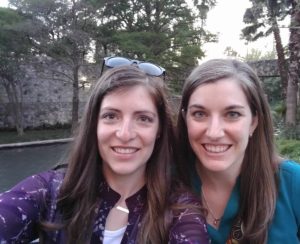Finally catching up on MTNA conference recaps – so here’s what my Day 3 notes look like!
We started the morning early to attend the Piano Safari Showcase. I’ve been excited to check out their rote teaching music and it was neat to hear about their method from Dr. Julie Knerr and Katherine Fisher. They demonstrated several animal techniques to use with beginning children and performed several fun pieces. Loved their idea to mark notes to use in improv with little post it notes on the piano keys (example for blues scale, etc.).
We started the morning early to attend the Piano Safari Showcase. I’ve been excited to check out their rote teaching music and it was neat to hear about their method from Dr. Julie Knerr and Katherine Fisher. They demonstrated several animal techniques to use with beginning children and performed several fun pieces. Loved their idea to mark notes to use in improv with little post it notes on the piano keys (example for blues scale, etc.).
This morning was full of short sessions – I like this because we could learn from more people in less time but the 20 min break between was way too long and wasted time, in my opinion. First, I heard from Dr. Courtney Crappell in his session “Hacking the Piano Lesson”. He emphasized 3 “hacks” to help lessons:
#1. Prepare for challenges (don’t get stuck in the music)
#2. Make changes that matter (best Return on Investment?)
#3. Less talk — More Play! (esp. modeling)
Next, I went to “Effortless Trills & Tremeloes” given by Fred Karpoff. He used a quote that stated, “The state of technique is defined by a trill,” which I found interesting. (I need to go check each of my intermediate to advanced students trills now!) He pointed out that to use the point of sound most effectively, fingers shouldn’t raise much (definitely not off the keys). Then students should use a loose hand (knocking video demonstration) and rotation (shallow rotation vs. from biceps). For tremelos he suggested putting the emphasis on the beat and try first in small intervals with students (4ths, then 5ths and out to octaves last).
Then I attended a session titled “The 40 Piece Challenge” by Elissa Milne, from Austrailia. Their curriculum and testing is quite different there so she shared her experience changing over to a repertoire rich learning experience. While she admitted it didn’t work for every student, it did work for many. It depended on their viewpoint for lessons – some students want “great learning around the keyboard” while others take piano for “learning to become a great pianist”. She explained that she asks parents to budget at least $100 to $150 per year and shared that parents worry if students only get through $80 of music that year. (I would love parents to worry about their child’s progress only going through $80 of music! Lol). I loved the point she made that students will learn so much more when they can experience over 5 or 6 pieces a year – something we can fall into the trap of when we have advanced students with competitions and recitals coming up. (I’m still mulling over this idea and working on finding a balance in easy music for more sight reading/learning challenges and hard music to master & perform…)
Right before lunch was a quick session from Christopher & Julie Fisher about piano duets. They shared their top ten piano duet tips which included precision, listening, balance, choreography and more. As a husband and wife duo team, their stories about performing together and coaching their own duo teams were inspiring to hear. They reminded everyone how much joy comes from making music together and how motivational that can be in your piano studio.
After lunch, I attended a fun session by Edward A. Francis, titled “Developing & Maintaining a Successful Private Music Studio, or How to Buy that Refrigerator in 15 seconds or less… Guaranteed!” He shared plenty of humorous life experiences with students & parents. He emphasized that Word of Mouth is still the best attractor for finding students.

For the rest of the afternoon, we headed to the Exhibition Hall to turn in coupons (from the MTNA coupon book) and do some book shopping. Then we headed out to see more of San Antonio – the Pearl district was gorgeous! And we loved walking along the Riverwalk for dessert later that evening.
Author: Whitney
Whitney Hawker, NCTM, teaches group and private piano at Weber State University, Utah. She loves surprising students with the perfect piece or a new exciting game! After graduate school, she missed sharing ideas and resources daily with colleagues so she and her friend, Spring, began blogging together at 4DPianoTeaching.com
